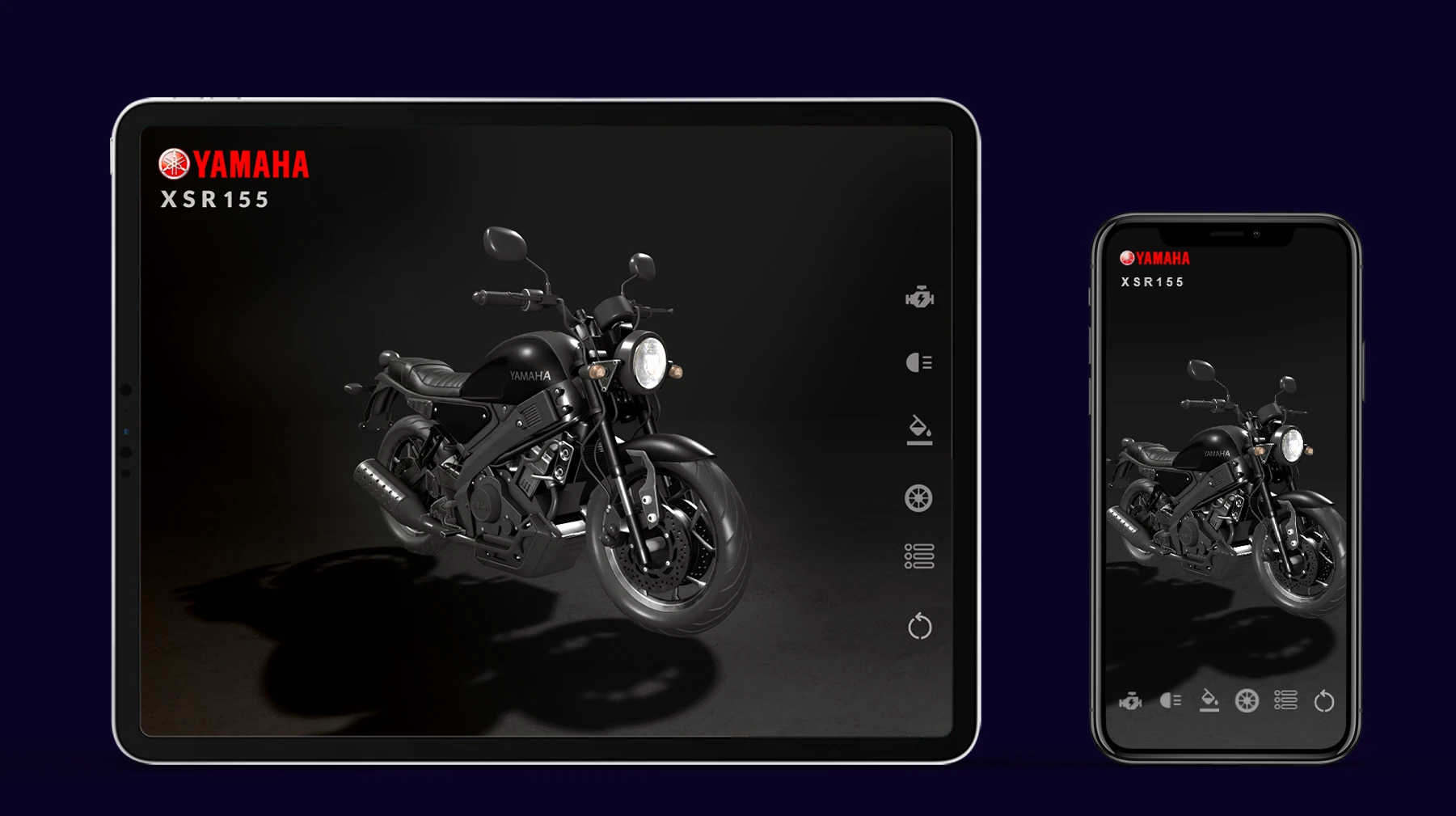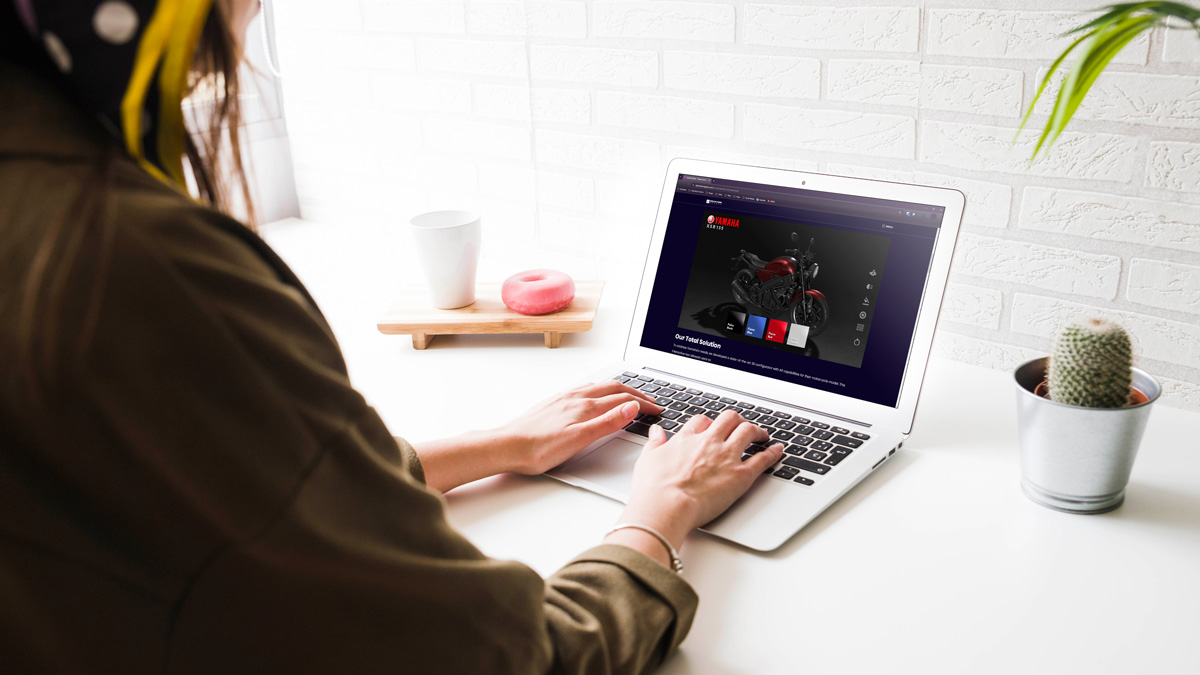
Interactive media refers to any form of media that changes in response to user input and allows audiences to actively participate. Unlike non-interactive media, where the content remains static regardless of viewer reactions—such as in a movie—interactive media enables users to influence the outcome, as seen in video games.
In the realm of digital media, interactive media encompasses a variety of channels and devices through which individuals engage with content. This includes interactive websites, mobile applications, video games, interactive displays, and virtual reality experiences.
In the following sections, we will explore interactive media in detail, discussing its applications and advantages.
Brief history of interactive media
The first websites were created in the ’90s. These static web pages resembled simple image files, and users could not leave comments or fill out forms. They consisted of a combination of text and images.
After 1995, dynamic websites emerged. Unlike static pages, dynamic websites allow content to change based on the viewer’s preferences and settings, such as using filters to sort products by price.
As technology advanced, various web and app development languages and infrastructures enabled the creation of interactive media, applications, websites and platforms. Today, popular media channels, like websites, incorporate a mix of static, dynamic, and interactive elements.

Interactive media and content can be found everywhere, from displays at shopping malls to augmented reality games played on mobile devices and even interactive game walls at exhibitions.
Streaming services like Netflix have taken user interactivity a step further by allowing viewers to choose which shows to watch. Additionally, in the TV series “Black Mirror,” users can directly influence the story by selecting the next course of action for the characters.
Now, Augmented Reality (AR) and Virtual Reality (VR) have added new aspects and made this sensory experience even richer.
Now, devices like Apple Vision Pro allow us to interact with any form of media that appears in front of us.
Interactive Media Examples and Types
Interactivity in media can take many forms, but when you hear the phrase “interactive media,” it comes down to one of these things:
- Games
- Websites
- Advertising Campaigns
- Education Media
- Interactive Screens
- Product configurators
- AR/VR/XR
Now, let’s look at each type and learn more with examples.
Games are the first and most interactive!
Games are often considered the best example of interactive media because they require active participation from players. In games, you feel a sense of control over the storyline since your choices can impact the plot. Additionally, you can engage with games using various multisensory devices, such as eyeglasses, controllers, outfits, and other specialized equipment.
Many games allow you to customize the game world and your character or even create your own avatar, as seen in Minecraft. In certain games, such as “Pokémon GO,” the real world blends with the game world, incorporating your surroundings into the gameplay. When playing games, you make decisions, solve problems, and immerse yourself in an imaginary world. This illustrates how interactive media can transform entertainment into something engaging and thought-provoking.
Immersive games offer a higher level of interactivity
Immersive games are video games designed to make players feel as though they are truly “inside” the game world. This concept also includes interactive gaming rooms that utilize touch screens or devices like VR headsets to virtually immerse players in the game environment.

Interactive Website
An interactive website is a website that allows users to engage and interact with its content instead of just viewing it passively. It provides features and tools that respond to user inputs, creating a personalized experience.
Read more about Interactive websites.
Your website is the first thing people see—it’s your digital front door! So why not make the user experience fun and interactive right from the start?
If you’re looking to boost communication and get visitors engaged, we’re here to help you create a website that doesn’t just look amazing but also keeps visitors coming back for more.
Learn more
Product Configurators
An interactive product configurator, or a 3D configurator, is an online app in which you can customize the product that you want and see the changes at the same time before you buy it; also, you can see the product features from different angles (because it’s a 3D model).
Click on the images and work with a real example.
Yamaha Motor
Read more about 3D Product Configurators
Interactive & Hybrid Advertising Campaign
An interactive campaign is a marketing initiative in which customers actively interact with brand content in a new, meaningful, and personal way.
Traditional marketing campaigns aim to create things that everyone in the brand’s target audience will like. Interactive marketing campaigns, on the other hand, give every individual some (branded) tools, technologies, and platforms and tell them to express themselves!
Read more about interactive & hybrid advertising campaigns
Interactive displays, screens, and kiosks are devices designed to showcase interactive advertising or other types of digital content. These large touchscreens enable users to engage with the displayed material by touching the screen. They can be used in exhibitions for product searches and more.
Interactive wall
It’s a touchscreen display that allows interaction through touch and motion on a large screen installed on a wall, creating a natural connection with the digital world.
AR/VR/XR
AR, VR, and XR are powerful tools in interactive media, each offering distinct advantages and applications. AR enhances the real world, VR provides a completely immersive experience, and XR combines elements of both to create versatile and engaging environments. As technology continues to advance, the potential for these technologies in interactive media will only grow, offering increasingly sophisticated and impactful experiences.
Example:
A renowned restaurant was struggling to engage its customers with their traditional paper menu. Despite offering a variety of delicious dishes, the static menu failed to capture the imagination of their diners. The restaurant wanted a unique and interactive way to showcase their offerings, enhance customer experience, and stand out in a competitive market.
We developed an AR menu that could be accessed through customers’ smartphones. By scanning a QR code placed on the table, diners could see 3D models of each dish, complete with detailed descriptions, ingredient lists, and nutritional information. This interactive menu not only made the ordering process more engaging but also helped customers make more informed choices.
Interactive 3D showrooms
3D showroom or virtual showroom is a virtual space designed to showcase products or services in a three-dimensional environment, often accessible online. It allows users to interact with and explore products in a more immersive and engaging way compared to traditional 2D images or videos.
Interactive virtual experience
An interactive virtual experience is a digitally created environment that allows users to engage and interact with various elements in real-time. These experiences are designed to be immersive, providing a sense of presence and participation that goes beyond passive observation. It could be used in following fields:virtual Tours , training Simulations , retail and e-commerce , education , entertainment , marketing and events.
Using AR/VR in Interactive Media
The ways in which we engage with and consume digital content have been changed by augmented reality and virtual reality. AR brings digital elements into the real world without any problems. For example, Snapchat filters and the world of Pokémon GO are great examples of this. VR, on the other hand, takes users to totally new digital worlds, like the deep of the ocean or space. With these technologies, users can direct and connect with the virtual world, making the experience more engaging. With AR and VR, you can connect with digital material like games and training models in new ways.
For example, there are so many applications which can add interactive character to reality and you can speak to them and gain information about historical sites or guide you in theme parks.
Interactive Fitness apps not only keep track of your workouts but also give you feedback in real-time, which makes your workouts more enjoyable.
With their engaging lessons and quizzes that you can take at your own pace, educational apps make learning fun. With social networking apps, you can stay in touch in real-time, which makes communication more interesting. Mobile apps are very dynamic because they use a touch-based interface, alerts, and user-specific features.
Interactive Advertising
Interactive ads often have quizzes, votes, games, surveys, and parts of ads that you can click on. Not only do interactive ads get people’s attention, they also make the experience more personal and engaging. This method fits with what today’s consumers want: personalized and interesting material that makes the business more personal to its audience.
Organizations and brands use this kind of ads to make sentimental relations To earn loyalty from the customers and attract the attention of potential customers.Also it’s a long term advertisement because of the sentimentalization.
Now that you have grasped the importance of interactive advertising, let’s see a real example.
Facebook Advertising platform lets businesses use playable games as advertising content. Users play this game in their feed and interact with products or any type of promotion.
Interactive education
Interactive education is a learning approach that includes using any type of interactive media or devices in the learning process. Unlike traditional education, which often relies on passive listening and memorization, interactive education encourages engagement, participation, and collaboration, making the learning experience more dynamic and effective. Interactive tutorials, simulations, and e-learning platforms that enhance understanding and retention.
Benefits of Interactive Media
Enhanced Engagement: Interactive media actively involves users, increasing attention and retention rates compared to static content.
Personalization: Tools like interactive videos or product configurators can adapt to user preferences, creating tailored experiences that resonate with the audience.
Higher Conversion Rates: Engagement-driven content often leads to increased actions, such as sign-ups, purchases, or shares, boosting ROI.
Better Data Collection: Interactive tools capture valuable user data (e.g., preferences, behaviors) that can inform marketing strategies.
Brand Differentiation: Interactive media helps brands stand out by showcasing innovation and creativity, making them more memorable in a crowded marketplace.
Stronger Emotional Connections: Formats like virtual tours or brand storytelling through interactive platforms create emotional resonance, fostering loyalty.
At the end
It’s not just about the content but how you package it. Instead of “pushing” your message, interactive media allows you to “pull” customers in and let them be active creators in shaping your narrative.
Whether you are an educator looking to engage students, a business aiming to create branded customer experiences, or a Startup company exploring cutting-edge advertising solutions, interactive media can help you achieve your goals. Contact us to learn more about implementing interactive solutions tailored to your needs!

HosseinDigital Marketing Expert






I really enjoyed reading this article about interactive media! It’s so cool to see how far we’ve come from static websites to such engaging experiences. The examples of gaming, AR, and VR really show how interactive media can transform entertainment and education. It makes me wonder, though, Do you provide services related to creating these kinds of interactive experiences?
Thank you for your comment! Yes, we do provide services for creating engaging interactive experiences, including websites, AR/VR solutions, and more. Feel free to contact us to learn more!